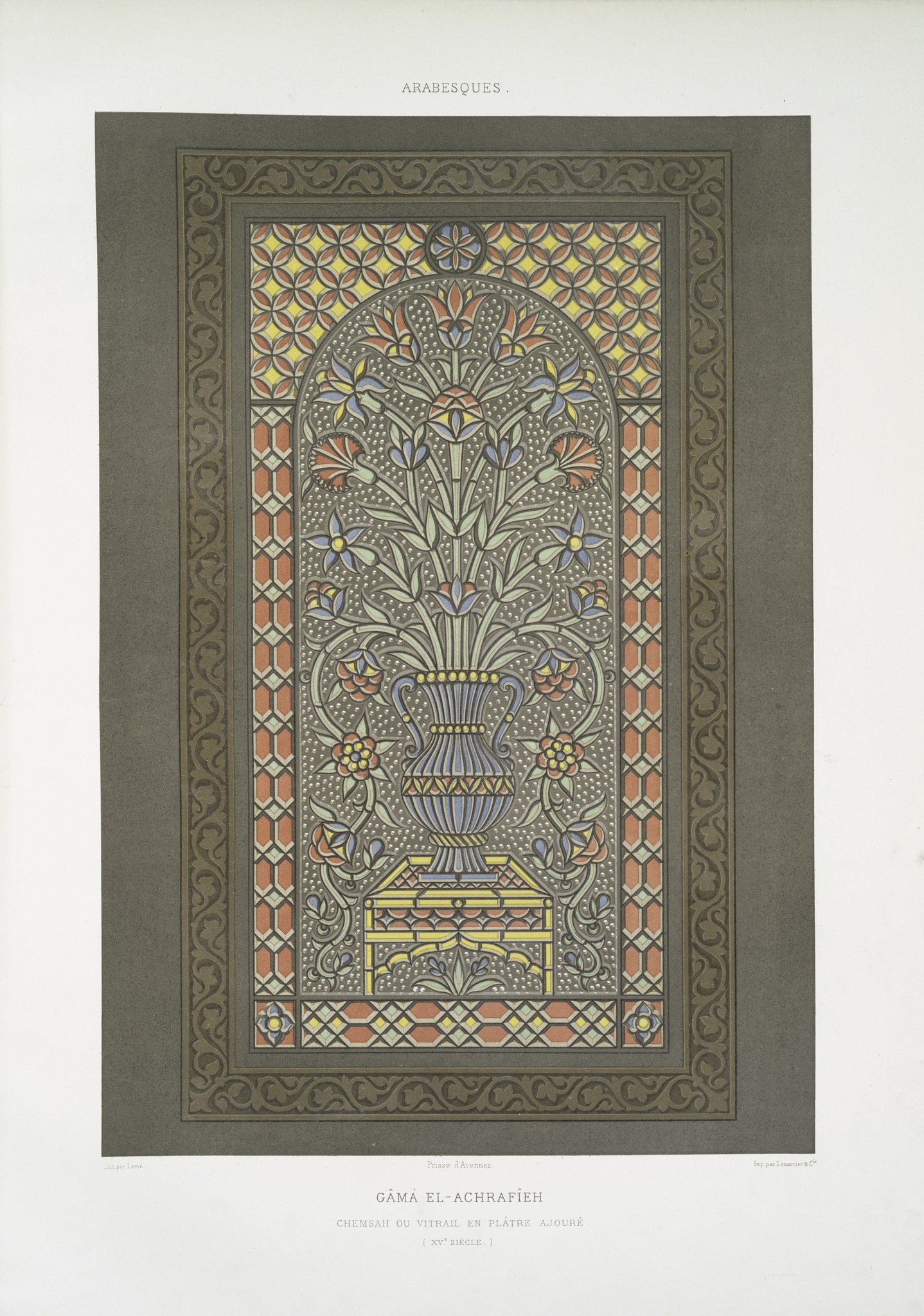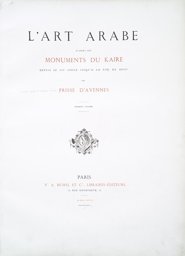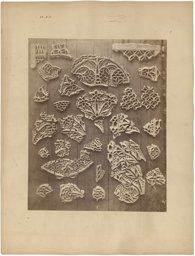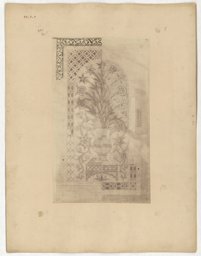Research
The window depicted was reconstructed from fragments. Prisse d’Avennes explains that he had been able to buy in Paris three boxes with fragments of six stucco and glass windows from a mosque in Egypt. In 1867, these windows had been sent from Egypt to the world’s fair in Paris, but had not survived the journey and therefore arrived there in pieces. Prisse d’Avennes succeeded in reconstructing two windows (Prisse d’Avennes, 1869–1877, vol. 1, pp. 154, 278, vol. 3, pl. CXLV; Keller, 2020, p. 31).
A photograph of these fragments can be found in one of Prisse d’Avennes’ Cairo’s portfolios (IG_86). Furthermore, a retouched and mounted photograph is preserved, which shows the floral and geometrical motifs of the fragments in different compositions (Bibliothèque nationale de France, Fonds Prisse d’Avennes, IG_488).
Prisse d’Avennes reports that the seller of the fragments, M. Maynard, had the windows removed from a mosque called ‘Gama-el-Achrafieh’ in Cairo. The Egyptologist identified this building with the Mosque of Al-Ashraf Barsbay, begun in 828 AH / 1425 CE, but admitted himself that there were other al-Ashraf mosques in Cairo (e.g., of Sultans Inal and Qaytbay).
A similar window, where the vase also stands on a pedestal, is preserved in the Victoria and Albert Museum (223/1894).
The illustration had a direct impact on the Villa di Sammezzano (1853–1889), a historicist and orientalist building complex near Florence, transformed by Ferdinando Panciatichi di Ximenes d’Aragona (1813–1897). Although Prisse d’Avennes declared the illustration to be a window (‘chemsah ou vitrail’), Panciatichi had it transferred onto the walls for a mural painting in one of the castle’s halls, the Sala dei Gigli (see Keller, 2020, p. 33).
In 1897, the window was partly reprinted by Lewis Foreman Day, in his Windows. A Book About Stained & Painted Glass (fig. 6).
Dating
1877
Related Locations
Place of Manufacture



